Accessory Exercises for Squat Improvement
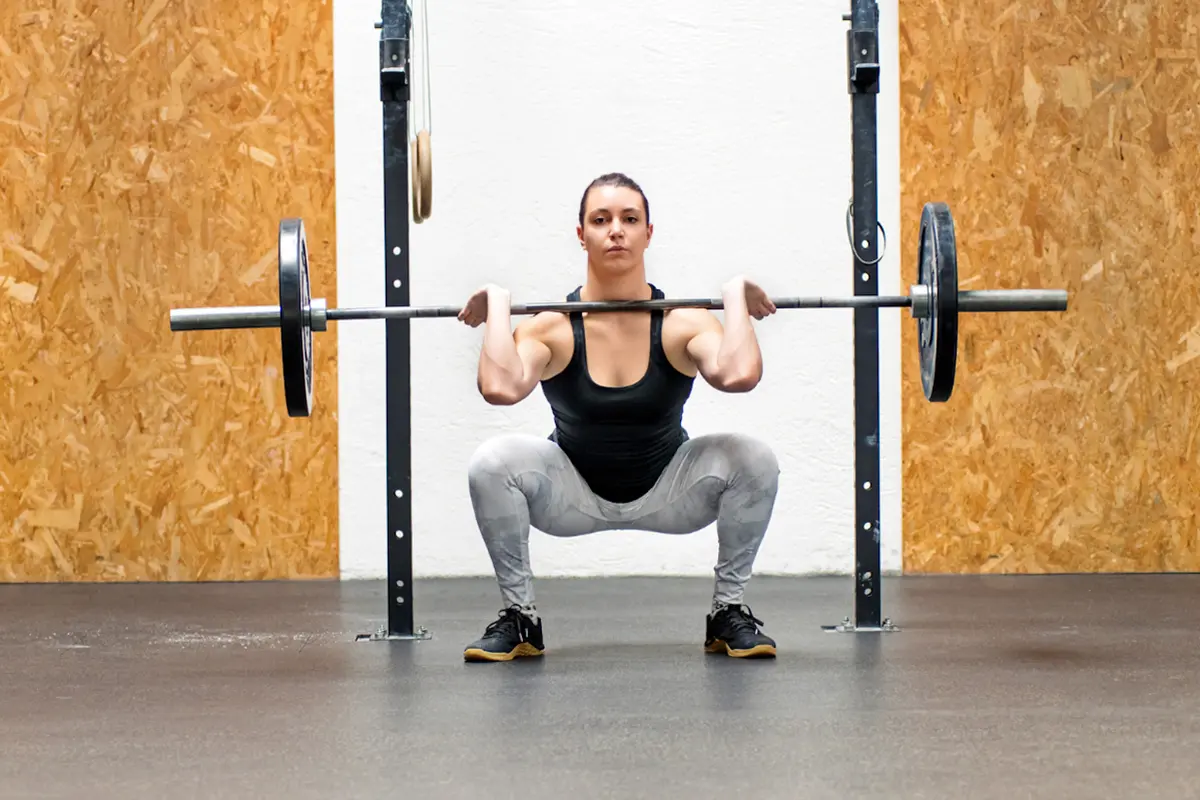
What's In This Article
- Key Highlights
- Introduction
- Why do we Need Accessory Exercises for Squat Improvement?
- What are some accessory exercises that can help improve your squat?
- Factors to Consider When Choosing Squat Accessory Lifts
- Incorporating Squat Accessories into Your Fitness Regime
- Safety and Precautions While Doing Accessory Lifts
- Conclusion
- Frequently Asked Questions
- References
- Resources
Key Highlights
- Accessory lifts target specific muscle groups and movement patterns to enhance overall squat performance while addressing individual weaknesses and sticking points.
- Front squats are particularly effective for developing quad strength and maintaining proper torso position, as elite powerlifter Dan Green emphasized.
- Tempo and pause squats help develop better control and strength at the bottom position of the squat, which is typically the weakest point for most lifters.
- Strength coach Mark Rippetoe states that understanding human anatomy is crucial for proper barbell training since it's essentially "loaded human movement."
- Research by Serafim et al. (2023) confirms that traditional strength training methods are safer than other resistance training forms, like strongman activities.
- Unilateral exercises like split squats are crucial for addressing muscle imbalances and developing individual leg strength and stability.
- The most effective accessory exercise program should be individualized to identify weaknesses, consider bar path mechanics, and allow adequate recovery time between sessions.
Introduction
Squat assistance exercises are essential for improving strength and perfecting technique. They enhance overall performance by focusing on particular muscle groups and range of motion.
As a powerlifting coach, a strong and safe squat is a big part of my work, and these are some of the variations I have used to address weaknesses and sticking points for my athletes and myself. These movements also help improve other powerlifts, especially deadlifts.
Recognizing the significance and advantages of such lifts can influence a lifter's strength and muscle development. When used strategically, these exercises can target weaknesses and foster a solid and stable barbell back squat.
Why do we Need Accessory Exercises for Squat Improvement?
Squat accessory lifts are exercises designed to target specific muscle groups, improve strength, and enhance performance. These lifts often focus on areas such as the posterior chain, lower body and lower back muscles to address weak points and improve overall technique.
Gentil et al. (2015) and Paoli et al. (2017) demonstrated the value of accessory lifts, showing them to be effective for muscle and strength development.
Understanding the role of these accessory lifts is essential in developing a comprehensive strength training program and maximizing the benefits of squat variations.
The Concept of Accessory Lifts
- Accessory lifts support and enhance the primary strength training exercises. They are additional movements that target specific muscle groups and assist in improving overall performance.
- Squat accessory lifts are designed to strengthen the muscles involved in the squatting movement, enhance the range of motion, and address any weak points.
- The concept revolves around identifying and targeting specific areas to improve strength, stability, and technique, resulting in a more effective and well-rounded performance.
Importance of Accessory Lifts in Squats
- Accessory lifts enhance strength, stability, and range of motion by focusing on key muscle groups and addressing mobility limitations.
- They also help prevent injuries by rectifying imbalances and reinforcing proper positioning (Mrzyglod et al., 2021).
- Incorporating these lifts into a comprehensive strength training program can substantially improve technique and lower body strength.
- Accessory lifts are essential for any lifter aiming to perfect their squat.
What are some accessory exercises that can help improve your squat?
Front, box, tempo, goblet, pause, pin, split, dead, and band squats are some of the best squat accessory exercises for improving strength and technique. Each lift targets specific muscle groups and addresses various weaknesses, contributing to overall performance.
Louie Simmons, the founder of Westside Barbell, advocated for various accessory exercises to build squat strength. Westside Barbell's approach includes exercises like good mornings, reverse hypers, and sled drags to develop a strong squat.
The accessory exercises below are a small selection, but incorporating them into your training regimen can enhance lower body strength, range of motion, and stability, paving the way for a strong, efficient squatting technique.
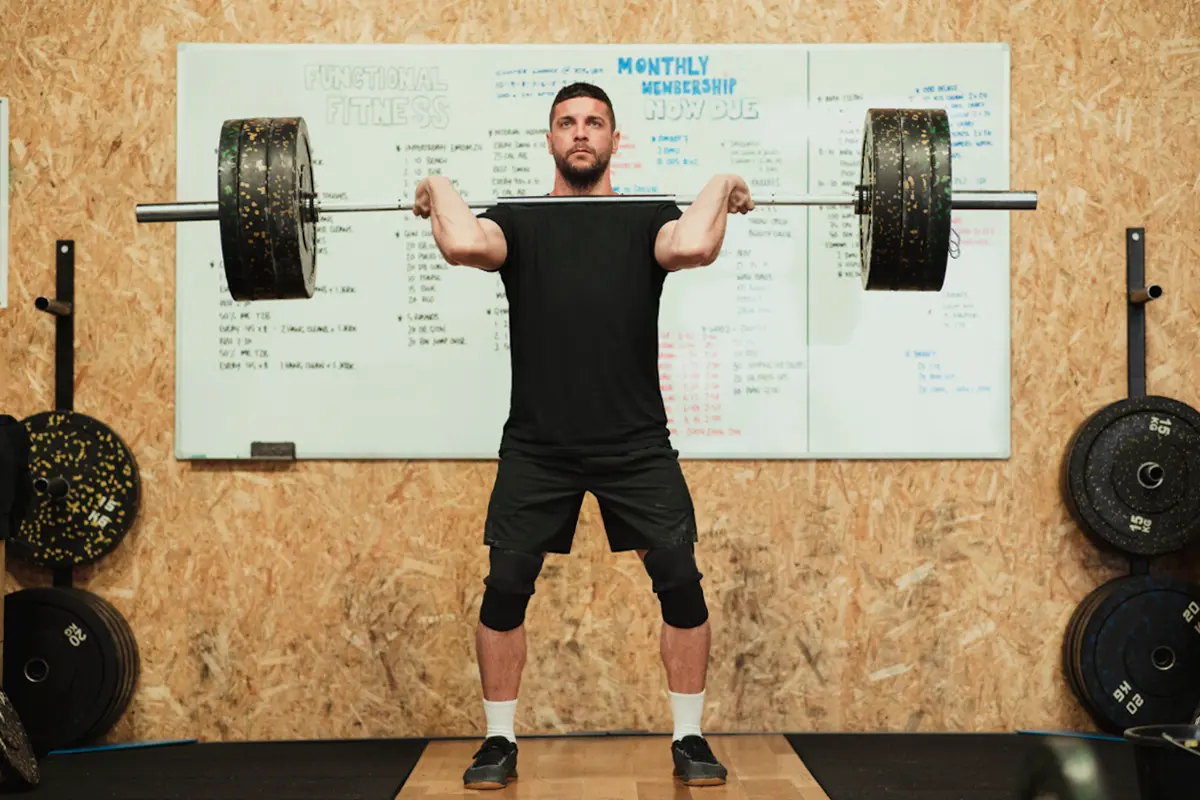
Front Squats
What Are Front Squats?
A powerful leg exercise that targets the strength of your quads while engaging the core and upper body. Key benefits include improving torso posture, knee flexion and squat strength.
Dan Green, an elite American powerlifter, emphasizes the importance of front squats as an accessory exercise. He states, "I like the front squat just because it really forces me to use my quads and not get a lower back dominant when I'm trying to train my legs."
Setup & Technique
- The Right bar Position: Across front deltoids
- Arm Position: Elbows high, upper arms parallel to the ground
- Wrist Flexibility: Critical for proper bar placement
Execution Tips
- Maintain neutral spine
- Initiate movement with hips and knees
- Keep torso upright throughout the squat
Pro Tip:
Requires good quad strength, wrist mobility and core stability. Practice form before adding heavy weight.
Box Squats
Setup
- Choose a box height matching the desired squat depth
- Position the box behind you
- Use a squat rack or free-standing setup
Technique Steps
- Unrack a squat bar with a standard squat grip
- Position feet slightly wider than shoulder-width
- Chest up, core engaged
- Slowly descend, pushing hips back first
- Sit controlled onto the box, maintain tension
- Pause briefly on the box without fully relaxing
- Drive through heels, explosively return to starting position
Key Technical Points
- Maintain neutral spine
- Keep chest up
- Control descent and ascent
- Avoid bouncing off the box
- Engage posterior chain muscles in hip extension
Pro Tip:
Start with lighter weights to perfect form before progressively adding load.
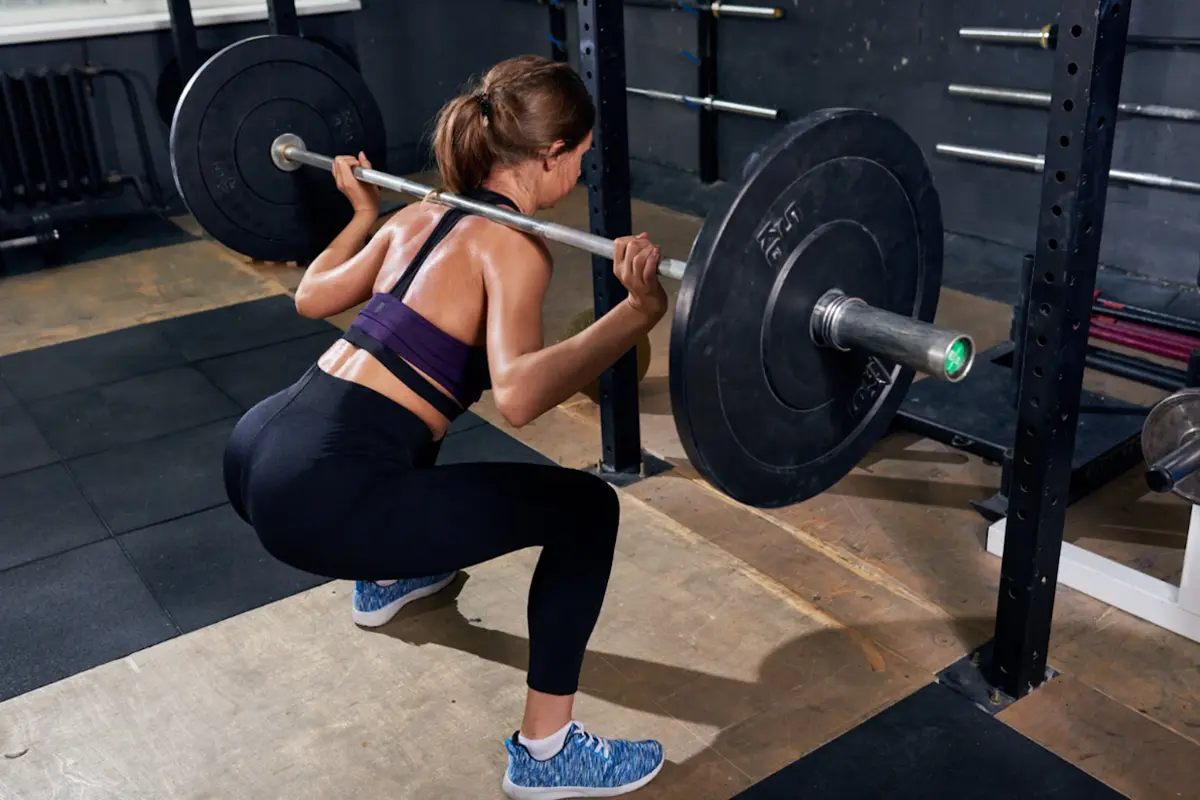
Barbell Tempo Squats
What Are Tempo Squats?
A method of controlling squat phases to improve strength, stability, and technique.
Key Benefits
- Develops muscle control
- Targets weak points
- Enhances movement pattern
- Improves overall squat technique
Technique Breakdown
- Slow, controlled descent
- Pause at the bottom of the squat
- Controlled, deliberate ascent
Training Focus
- Emphasize time under tension
- Maintain proper form
- Engage muscles throughout the entire movement
Pro Tip: Start with lighter weights to master tempo before increasing load.
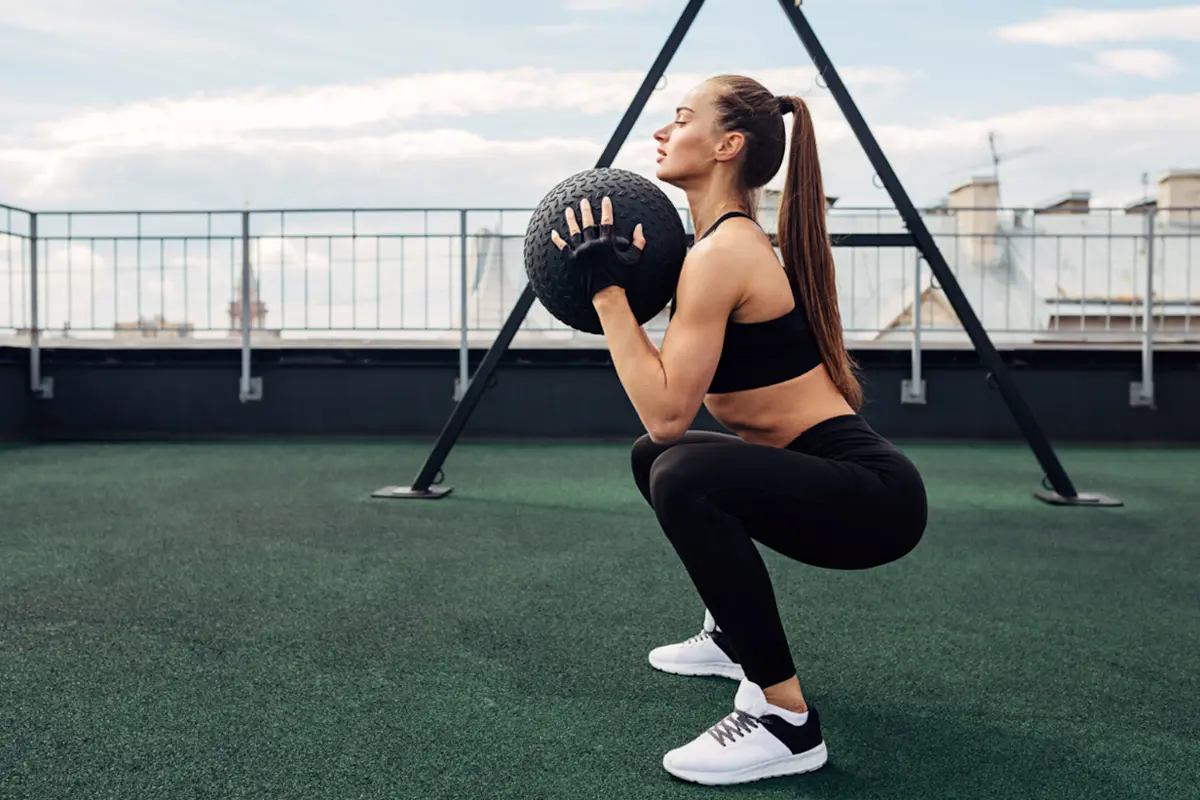
Goblet Squats
What Are Goblet Squats?
A versatile variation using a kettlebell or dumbbell held at chest level.
Key Benefits
- Targets quadriceps, glutes, and core
- Improves mobility and stability
- Excellent for beginners
- Ensures proper torso positioning
Technique Highlights
- Hold weight at chest level
- Maintain upright torso
- Perform a full range of motion
- Focus on deep squat movement
Pause Squats
What Are Pause Squats?
A variation that involves pausing at the bottom of the movement. Chad Wesley Smith, founder of Juggernaut Training Systems, favors pause squats as his preferred accessory movement. He explains, "I like it because it gives you a lot of time under tension at the bottom which for most people that's their weakest point."
Key Benefits
- Eliminates stretch reflex
- Recruits more muscles
- Improves strength and stability
- Addresses weak points in technique
Technique Highlights
- Descend to the bottom of a squat
- Hold 2-3 seconds at the bottom position
- Maintain upright torso
- Drive through heels during ascent
Pin Squats
What Are Pin Squats?
A variation using safety pins controls the range of motion and eliminates the stretch reflex.
Key Benefits
- Targets specific muscle weak points
- Improves explosive power
- Enhances squatting technique
- Develops strength from static positions
Technique Highlights
- Set bar on safety pins at chosen height
- Descend to pin position
- Pause briefly
- Drive weight upward with controlled power
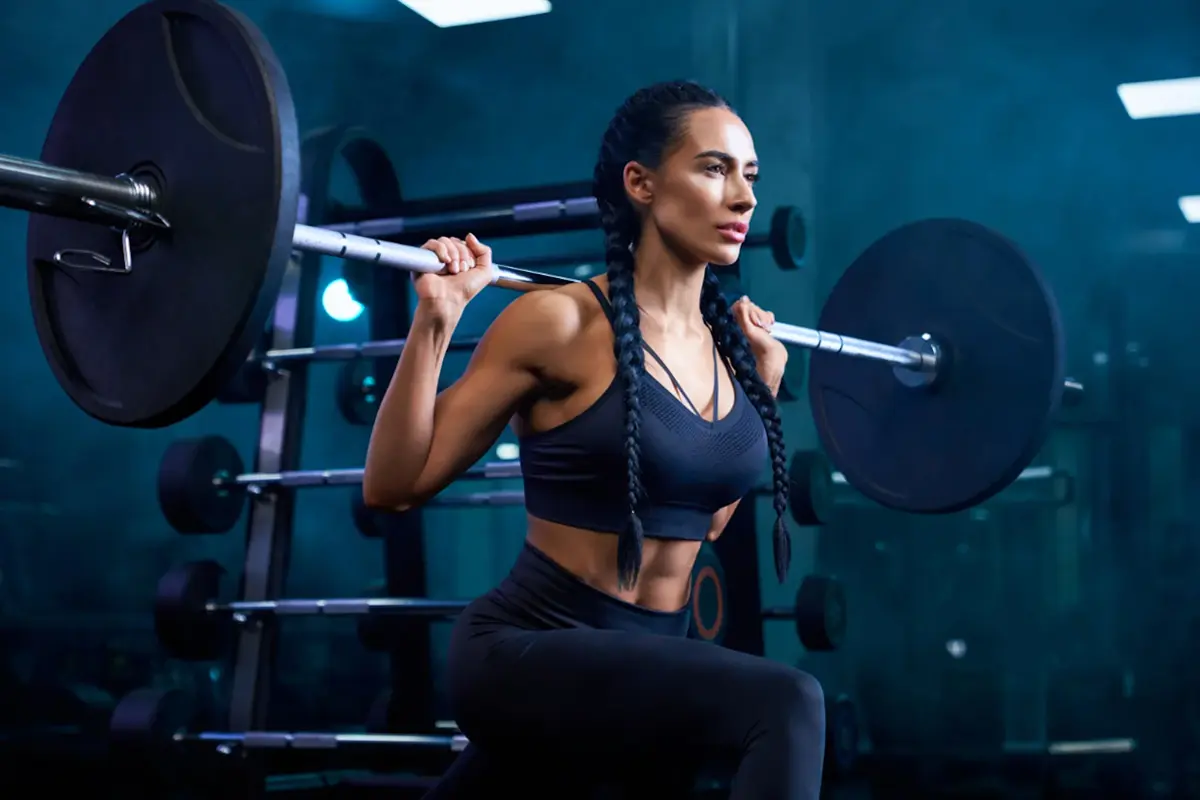
Split Squats
What Are Split Squats?
A unilateral exercise targeting individual leg strength and stability.
Key Benefits
- Improves leg strength and balance
- Works on muscle imbalances
- Enhances hip mobility
- Develops coordination
- Targets quadriceps, hamstrings, glutes
Technique Highlights
- Start in a split stance
- Lower body until back knee nearly touches the ground
- Keep torso upright
- Maintain a 90-degree front knee angle
- Engage core throughout the movement
Pro Tip: Begin with bodyweight to perfect form before adding weights. The Bulgarian is an advanced split squat variation with an elevated rear leg.
Factors to Consider When Choosing Squat Accessory Lifts
When considering which accessory lifts to incorporate, it's essential to identify weaknesses and sticking points within your squat technique. Understanding bar path and body mechanics is crucial for selecting the most practical accessory exercises.
By addressing specific ranges of motion and weak points, lifters can tailor their accessory movements to strengthen and improve their squat performance. The best way to approach selecting the most effective accessory exercises is by properly considering these factors and tailoring them to individual needs.
Identifying Weaknesses and Tension Issues
- To optimize performance, identifying weaknesses and sticking points is crucial.
- Assessing the entire range of motion helps pinpoint weak points and areas of tension, including the lower back (erector spinae) and glutes.
- Understanding the specific range of motion limitations and addressing issues in these areas can improve strength and technique.
- A professional coach or physical therapist can provide valuable insights into individual weaknesses and sticking points, tailoring accessory exercises to target and enhance these areas efficiently.
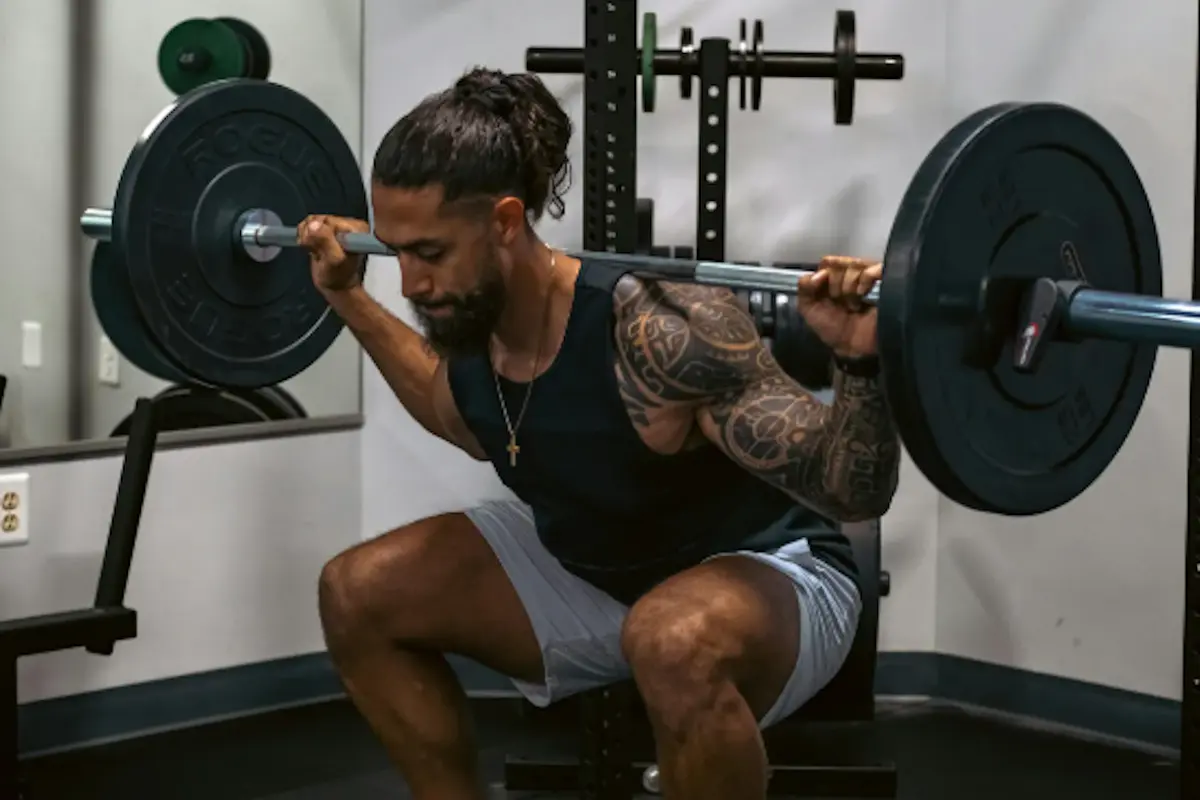
Understanding Bar Path and Body Mechanics
Mark Rippetoe, a renowned strength coach, stresses the importance of understanding human anatomy for proper barbell training. He states that "barbell training is merely loaded human movement – loaded human anatomy."
- Understanding the bar path and your body mechanics during squats is crucial for maximising strength and technique.
- The bar should move straight above the mid-foot, maintaining balance and stability.
- Body mechanics involve coordinating muscle groups, such as the posterior chain, upper back, and core, to ensure an upright torso and proper squat depth.
- Attention to these factors minimises the risk of injury. It optimizes squat performance, making them essential considerations for anyone serious about improving their squat.
Incorporating Squat Accessories into Your Fitness Regime
To optimize your fitness regime:
- Incorporate squat accessories strategically.
- Consider your weaknesses, tension points, and desired performance.
- Seek advice from a strength coach or physical therapist to determine the most suitable accessory movements.
- Schedule the accessory lifts smartly alongside your strength training sessions.
- Pay close attention to safety and intensity, ensuring proper technique and range of motion.
Scheduling and Intensity of Accessory Lifts
Key Principles
- Frequency: 2-3 times weekly
- Focus: Variety and targeting weak points
- Recovery: Ensure adequate rest between sessions
Implementation Strategy
Programming Considerations
- Complement primary strength workouts
- Gradually increase intensity
- Adjust based on individual technique and strength progression
Exercise Selection
- Target specific technique limitations
- Rotate accessory lifts to prevent plateaus
- Examples: Bulgarian split squats, pause, goblet squats
Intensity and Volume
- Start with moderate weight and controlled movements
- Progressively increase load within safe rep ranges
- Monitor form and technique closely
Recovery and Progression
- Allow 48-72 hours between intense lower body-focused sessions
- Listen to the body's signals
- Adjust volume and intensity as strength improves
Pro Tip: Individualize your approach based on personal strengths, weaknesses, and training goals.
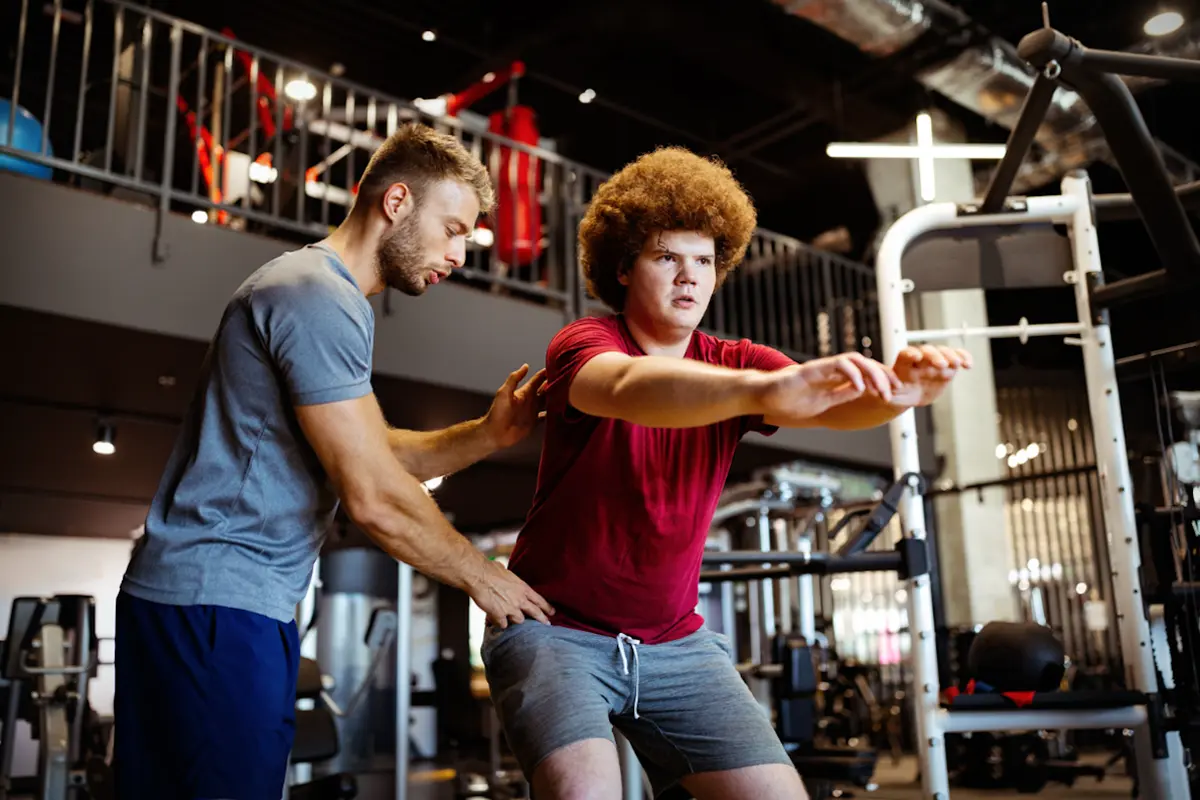
Safety and Precautions While Doing Accessory Lifts
Serafim et al. (2023) state that traditional strength training is the safest resistance training method compared to other forms like strongman training. They emphasize the importance of using established, conventional techniques for safer outcomes.
Injury Prevention Strategies
- Warm-Up: Essential preparation before exercises
- Equipment: Use appropriate gear and weights
- Professional Guidance: Seek expert advice on technique
Core Safety Principles
Form and Technique
- Prioritize correct movement patterns
- Maintain proper body alignment
- Execute controlled, deliberate motions
Self-Awareness
- Monitor the body's signals
- Stop immediately if experiencing pain
- Recognize personal strength limitations
Risk Management
- Weight Selection: Match to individual capabilities
- Progressive Loading: Increase intensity gradually
- Technique Refinement: Continuous skill improvement
Conclusion
In conclusion, incorporating these essential accessory lifts into your strength training regimen can significantly improve squat performance. By targeting specific muscle groups and addressing weak points, these accessory exercises enhance squat technique, range of motion, and overall strength.
Consult a strength coach or physical therapist for guidance, especially if you have tension or mobility concerns. Pay attention to proper form and gradually increase the intensity to reap the full benefits of these movements.
Frequently Asked Questions
How often should I incorporate accessory exercises into my squat training?
You should incorporate these exercises 2-3 times per week, allowing 48-72 hours between intense leg-focused sessions for adequate recovery. Complementing your primary strength workouts and gradually increasing intensity based on your progression is important.
Can beginners benefit from squat accessory exercises?
Yes, beginners can significantly benefit from accessory exercises, particularly movements like goblet squats, which are excellent for learning proper form. These exercises help develop fundamental strength, improve mobility, and establish good movement patterns before progressing to more challenging variations.
What are the most important factors to consider when choosing accessory exercises?
When selecting accessory exercises, focus on identifying your specific weaknesses and sticking points in your technique. Consider your bar path, body mechanics, and any mobility limitations. It's also helpful to consult a strength coach or physical therapist to determine the most suitable accessory movements for your needs.
Will doing accessory exercises help prevent injuries?
According to research cited in the document, correctly performed accessory exercises can help prevent injuries by addressing muscle imbalances and reinforcing proper positioning. However, it's crucial to maintain proper form, warm up adequately, and progress gradually with weight to maximize safety and injury prevention.
How do I know if I'm making progress with my accessory exercises?
Progress can be tracked through several indicators: improved form in your main squat, increased strength in the accessory movements themselves, better stability and control during exercises, enhanced mobility, and reduced difficulty in maintaining proper positioning. Regular assessment of these factors will help you gauge your development and adjust your training accordingly.
References
- Migliorini, F., Serafim, T. T., de Oliveira, E. S., Maffulli, N., & Okubo, R. (2023). Which resistance training is safest to practice? A systematic review. Journal of Orthopaedic Surgery and Research, 18(1), 296.
- Mrzygłód, S., Pietraszewski, P., Golas, A., Jarosz, J., Matusiński, A., & Krzysztofik, M. (2021). Changes in Muscle Activity Imbalance of the Lower Limbs Following 3 Weeks of Supplementary Body-Weight Unilateral Training. Applied Sciences, 11(4), 1494.
- Paoli, A., Gentil, P., Moro, T., Marcolin, G., & Bianco, A. (2017). Resistance Training with Single vs. Multi-joint Exercises at Equal Total Load Volume: Effects on Body Composition, Cardiorespiratory Fitness, and Muscle Strength. Frontiers in Physiology, 8, 1105.
- Gentil, P., Soares, S., & Bottaro, M. (2015). Single vs. Multi-Joint Resistance Exercises: Effects on Muscle Strength and Hypertrophy. Asian Journal of Sports Medicine, 6(2), e24057.
Resources
- Muscle & Fitness: "Top 5 Squat Accessory Exercises From the Pros"
- BarBend: "The 15 Best Squat Accessory Exercises for Muscle Growth and Strength"
- TrainingPeaks: "5 Ways To Squat Without A Barbell"
- Mirafit: "Accessory Lifts For... Squat"
- CrossFit Invictus: "Accessory Work for Squatting"